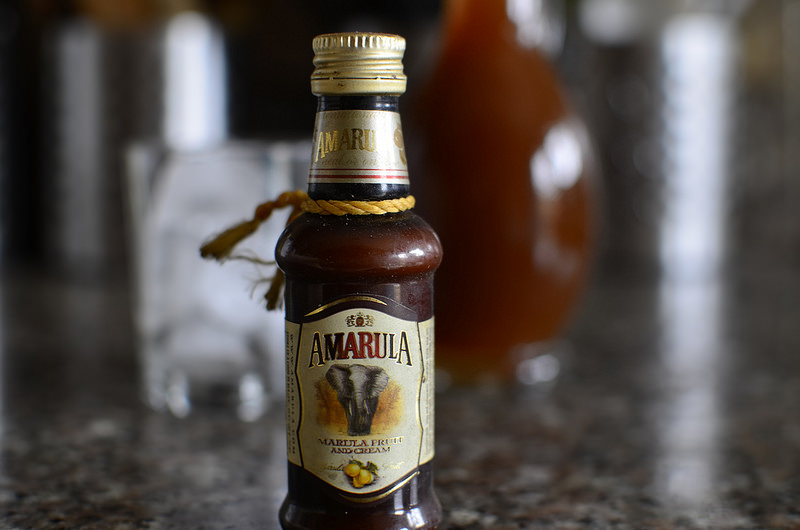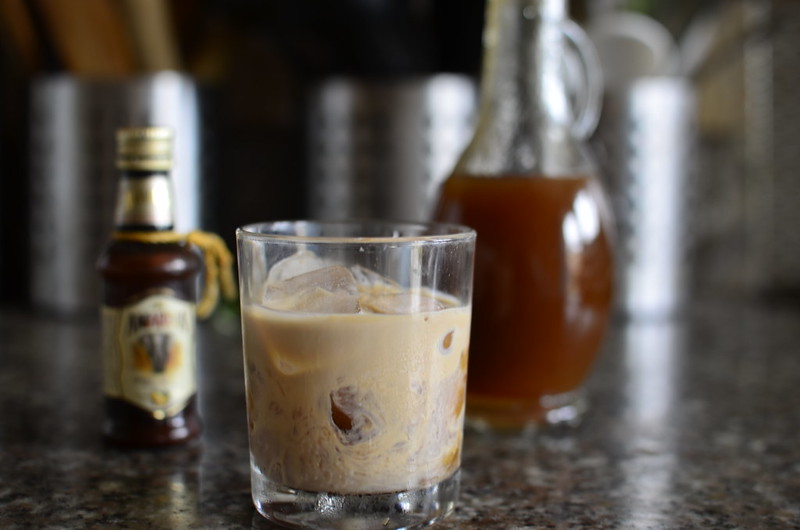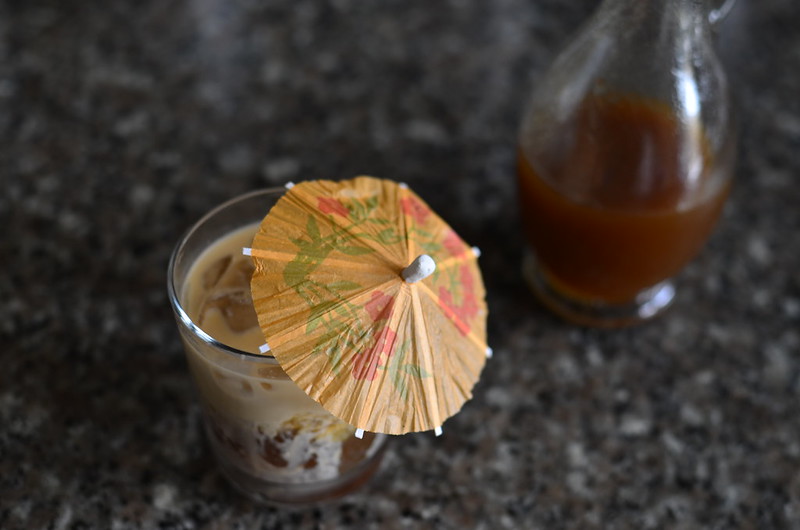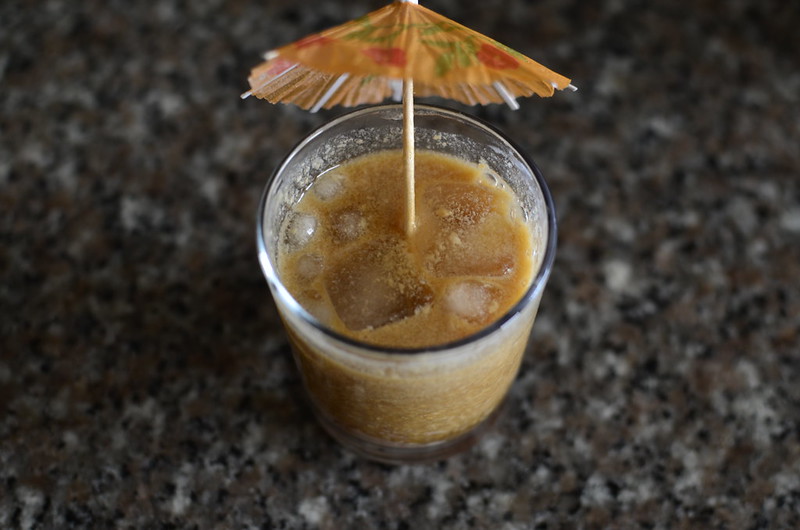As in seriously, trouble not yourself. For if you seek rich and cream, you’ll end up with yuck, the texture of grit and curd.
When tamarind syrup meets cream at first, nothing much happens but gravity.
I marvel at the gorgeous whirls stirred up just by pouring one drink into another.
I get the umbrellas out.
And then I stir and the result is disgusting – curdled milk. I can’t imagine this is what those of old enjoyed in possets.
It ends up down the drain. No time-wasting.
Proof that pretty to start off with, isn’t always pretty in the end. And that I may dabble in cocktails but I am no mixologist.
The curdling occured because the tamarind is quite acidic, and Amarula is a milk-based liqueur.
The most difficult dairy product to work with, in the realm of the cocktail, is milk in the 2% or lower range. The reason why milk curdles, according to Harold McGee, is because as the pH of milk drops to 5.5 or lower the protein groups (casein micelles) negative charge is neutralized and the micelles no longer repel one another. As the pH gets lower there is a cascading effect which causes these proteins to coagulate and form what we know as curd. Basically, the milk becomes unstable at lower pH points resulting in the “demulsification” of milk;
Almost all dairy products curdle with the addition of acid. The exceptions to this rule are heavy cream (36%) and creme fraiche. These two dairy products contain so little casein that the addition of acid results in an insignificant amount of curdling. So when it comes to making a stable drink heavy cream is a bartenders best friend; Art of Drink
The end.[wpurp-searchable-recipe]Don’t Bother With This Amarula-Tamarind Cocktail – – – [/wpurp-searchable-recipe]






Leave a Reply